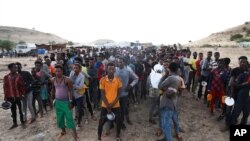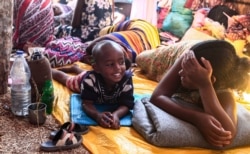An average of 4,000 women, children and men are crossing the Ethiopian border into eastern Sudan every day. The United Nations refugee agency reports those fleeing the fighting continue to arrive exhausted from the long trek to safety, frightened by their experience.
Conditions in Tigray have deteriorated since the Ethiopian government launched a military offensive two weeks ago. The government said this was in response to an alleged attack by the Tigray People’s Liberation Front on a government defense post.
UNHCR spokesman Babar Baloch said a full-scale humanitarian crisis is unfolding in the region. One established fact, he said, is that every war creates refugees.
“We have seen that repeatedly that civilians are affected as soon as conflict starts. So, people are really worried. They are fleeing," Baloch said. "There are stories of family separation, people not coming with anything. So that is why we are ramping up our assistance to help them."
While helping the refugees in Sudan, the UNHCR also is caring for nearly 100,000 Eritrean refugees living in four camps in Tigray. Baloch said the UNHCR is particularly worried for the safety of some 6,500 Eritrean refugees in a camp close to the combat zone. He said there is fear that Eritrean refugees could flee from there and become displaced again within Ethiopia.
He tells VOA of his concern about civilians inside Ethiopia, many of whom may have fled their homes and are internally displaced.
“Access and insecurity continue, and clashes make it very, very difficult to come up with an exact number of people displaced," Baloch said. "Our colleagues do raise their fears that there is displacement. We do not know what the scale is.”
What is known, said Baloch, is that people are on the run — both inside and outside the country.
Baloch said the huge number of refugees arriving in Sudan is rapidly overwhelming the capacity of humanitarian agencies to respond. He said the UNHCR and its partners are doing their best to provide food, clean water, health care and other essential relief items.
He said it is critical to identify new sites so refugees can be relocated away from the border where they will be safer and able to receive assistance and services.









